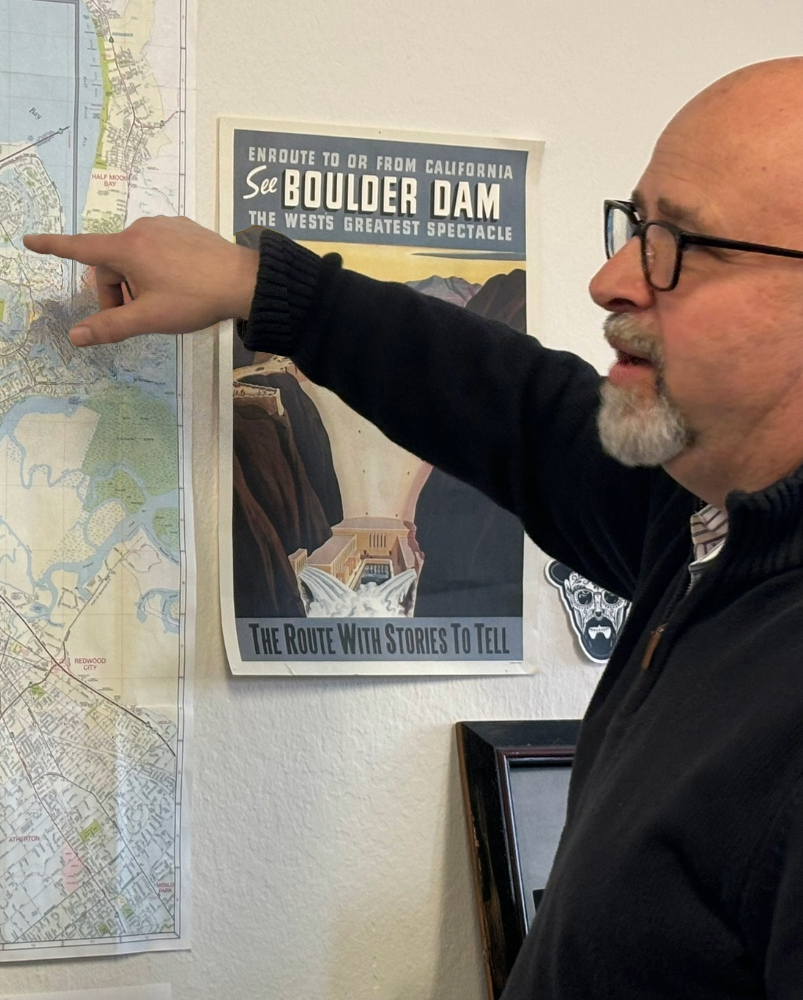Finding hope in between the lines

Missile bombardments are rattling buildings nearby. Sirens and subdued voices echo through the rubble. Gunshots ring just down the block.
Through virtual reality goggles, a news consumer experiences this scene 6,000 miles from the war zone.
This could be the future of journalism.
“Journalists would take a 360-degree camera, they would record or have drones record, and then they would show you this surround sound news coverage,” said Phylis Johnson, a professor of journalism and mass communications at San Jose State. “You don’t want to read the news — you want to feel it.”
The outlook on journalism, especially local journalism, has increasingly turned dire.
Rounds of nationwide layoffs prompted Politico to write “The News Business Really Is Cratering.” NPR conducted a forty-minute podcast titled “Local News Is Dying: What’s Killing It?”
The New York Times wrote an article on “How the Media Industry Keeps Losing the Future.”
Yet, journalists said that local news, evolving through new technologies, including virtual reality, and different business models, will not go extinct.
“Journalism itself is actually thriving, and we’re seeing people on new technologies, interacting with journalists, and getting excited about journalism,” said Sarah Wright, the editor of the Palo Alto Weekly. “I don’t think journalism is going away anytime soon.”
When journalists and other organizations propose that local news is dying, they usually reference the nationwide closures of print newspapers, where a decline is apparent. Two and a half newspapers closed per week in the past year, according to Medill’s The State of Local News Project.
Amidst this decline, journalists are shifting to new technologies and forms to reach a larger audience. The New York Times is already taking the lead with immersive journalism, including virtual reality, according to Johnson. She explained why other news outlets need to follow.
“Journalists need to start preparing for your generation, who tend to be in the gaming platforms, already playing around in the Metaverse,” Johnson said.
These new technologies will become cheaper, similar to how internet access increased, according to Johnson. Decreased costs increase the viability of these technologies for smaller local newsrooms, like the Palo Alto Weekly.
“The future of journalism is that it doesn’t matter what platform people are on. Journalists need to be there,” Wright said. “The whole point is to reach people.”
By connecting with their community through these technologies, journalists preserve local democracy.
When local newspapers published less political news, participation in congressional elections declined, according to the Journal of Politics of the University of Chicago. Knowledge of the candidates also decreased.
“Not having a local news source is detrimental to any community because there’s no one holding the powers that be accountable, and there’s no exchange of information and ideas,” said Jon Mays, the editor-in-chief of the San Mateo Daily Journal.
“Like a lot of newspapers, we struggled. The Palo Alto Weekly has struggled to be sustainable just on subscriptions and advertising alone,” Wright said.
The Palo Alto Weekly is part of Embarcadero Media, which transitioned to a nonprofit at the start of 2024. The nonprofit enables Palo Alto Weekly to accept donations.
“Opening up to that third method of asking for donations allows us to make more money, retain our staff, and retain our print product,” Wright said.
By transitioning, Embarcadero Media joined a growing number of nonprofit news organizations, many of which have found success with a local focus.
“Ten years ago, there were four national nonprofits. There are 100 nonprofits around the country now,” said Jennifer LaFleur, an assistant professor of data journalism at the University of California, Berkeley. “There’s a lot of nonprofit newsrooms starting either regional collaborative newsrooms or new local newsrooms.”
Yet these nonprofits are not offsetting the losses and closures experienced by for-profit newspapers. For the first time in the last two decades, the newspaper industry is employing less than 100,000 people, according to the Bureau of Labor Statistics via Medill’s The State of Local News Project
Journalists blame hedge funds, among other factors.
“Hedge funds, these giant financial institutions, are purchasing newspapers that are already dying because of many factors, and rather than using their money to revitalize these places, hedge funds are trying to skim off a profit without investing in the newspapers,” Wright said.
Alden Global Capital, the largest newspaper-owning hedge fund, has one of the highest profit margins in the industry, comparable to that of the New York Times Company, according to Nieman Lab.
Yet Alden has laid off or bought out hundreds of journalists nationwide, according to Poynter. The Denver Post, one of Alden’s newspapers, released an editorial titled “As vultures circle, the Denver Post must be saved,” after 30 newsroom staffers were laid off.
The editorial page editor resigned after he was told he could not criticize the hedge fund again.
“I was really lucky that I grew up working for papers in their heyday,” LaFleur said. “When I worked for the San Jose Mercury News, there were 500 reporters in the newsroom, and now there’s probably 20. It was family-owned then, as opposed to being owned by a hedge fund now.”
Alden is the hedge fund that owns Mercury News.
Newspapers were hurt by the coronavirus pandemic. From March 2020 through August 2021, more than 6,000 journalists were laid off, according to the Tow Center for Digital Journalism.
The pandemic also harmed newspapers’ relationships with their communities.
“My first newspaper was the San Jose Mercury News. We did a 10k, and we did all these community events. We were part of the community,” LaFleur said. “The pandemic made this worse in that we’re not out in the community, so people don’t know their local reporters, and there’s not some connection.”
Here, the nonprofit business model aids journalists.
“As a journalist in a newsroom, being underneath a nonprofit is great because we’re able to host community events and be more connected to the community in a way that I think our readers really value,” Wright said.
Palo Alto Weekly presented to student journalists at NorCal Media Day 2024, hosted by Palo Alto High School, an example of their community interaction.
“Being where people already are is the role of journalists,” Wright said.
When people started to browse the internet for news, the journalism industry struggled.
“The industry failed to turn online news into a profitable business in a way that made sense for readers,” Wright said.
Mays attributes the current decline in local news to a delay between the closing of community, or legacy newspapers and the opening of digital publications. He views the opening of digital publications with inevitability.
“I think that while there is a threat right now, with legacy newspapers shutting down, and there hasn’t been an immediate backfill of online publications, I don’t think that the lag time will be that long,” Mays said. “Someone’s going to figure out that there’s a market there, no matter the size of the community there. Everyone’s desperate for local news.”
Mays said the Daily Journal is an example of this process: newer news outlets inheriting local news reporting from older print newspapers.
“The San Mateo County Times was losing its local interest and wasn’t covering the local community that much. We launched as a website and a newspaper to fill that gap,” Mays said. “Someone will come and fill that gap in other communities as well. It’s going to happen.”
The Daily Journal has had a consistent audience and growing readership.
The San Mateo County Times, which published for more than 100 years, went out of business 10 years ago, according to Mays. It was bought by a hedge fund’s subsidiary in 1996, according to SFGate.
Journalists continue to be innovators in business, in which the number of hedge funds, but also nonprofits, is growing. They persist in pioneering and adapting to new technologies. At times, they encountered resistance from other journalists.
“We talked about almost 15 years ago how news should be multi-platform. Journalists said okay at first, and they did it for a while, and then they go, ‘Oh, this is not working,’” Johnson said. “The journalists didn’t want to learn the video. Most print journalists like to write, and they like print newspapers.”
Now, new technologies are key to a permanent future for journalism.
“I think that’s sort of an exciting way to think about the evolution of news, rather than just thinking, ‘Oh, everything is dying.’ Technology is changing. So it’s just a natural evolution,” Mays said.
Johnson also spoke of a period of transformation: “It’s gonna get wilder. In 10 to 15 years, you’re going to see some more radical changes already happening every day.”



